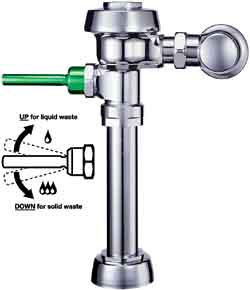Factors For Achieving Water Conservation Excellence:
|
Chart 3: DESIGN CASE CALCULATIONS
|
|||||||||||||||||||||||||||||||||||||||||||||
The architect is in a position to do "what if" scenarios using these simple calculations, with usage factors taken into consideration. It is always helpful, as well, to consult with manufacturers who have such usage data, and who can provide LEED assistance.
Real Results from LEED
The fact is, water efficiency measures in commercial buildings can easily reduce water usage by 30% or more, according to the USGBC. In a typical 100,000-square-foot office building, low-flow fixtures coupled with sensors and automatic controls can save a minimum of one million gallons of water per year, based on 650 building occupants each using an average of 20 gallons per day. As demonstrated in the example above, the standard toilet fixture uses 1.6 gpf and the standard urinal consumes 1.0 gpf. Design strategies using equipment such as 0.5-gpf urinals, as well as waterfree urinals or dual-flush toilets, can significantly impact usage and maximize water savings. All of these should be included in the architect's conservation strategy.
|
Taking conservation further, showers installed for those who commute by bicycle or for others who work out during lunch, can be fitted with low-flow 2.0-gallons-per-minute (gpm) showerheads and sensor-operated lavatory faucets with 0.5-gpm aerators, providing maximum water savings. Or, for example, in universities and schools, where efficient transportation is combined with sports activities, such shower strategies can deliver significant dividends in water savings.










